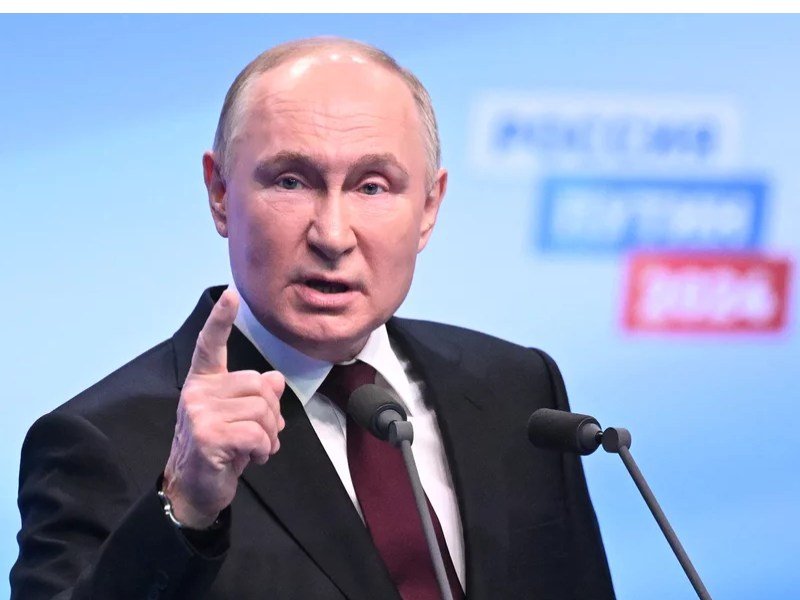- Russia has presented a list of demands for peace talks with the US.
- The demands include no NATO membership for Ukraine and recognition of Crimea as Russian.
- Moscow’s terms are similar to those previously discussed with the US and NATO.
- US officials express concerns over Putin’s commitment to a ceasefire.
- Experts suggest Russia’s demands may divide the West and hinder peace talks.
Russia has formally presented the United States with a list of demands, aiming to end its war against Ukraine and reset strained relations between the two nations. The details of these demands remain unclear, but sources familiar with the discussions indicate they closely mirror previous demands Russia made to Ukraine, NATO, and the US.
The demands were presented after a series of in-person and virtual discussions between US and Russian officials over the last three weeks. It remains uncertain whether Russia is willing to engage in peace talks with Kyiv before these terms are accepted.
A Broad Range of Demands
Russia’s demands include major geopolitical conditions that could have long-lasting effects. For instance, one key demand is Ukraine’s permanent exclusion from NATO.
Additionally, Russia wants foreign military troops barred from Ukraine and seeks international recognition of its claims over Crimea and four Ukrainian provinces.
These demands align with Russia’s long-standing desire to limit NATO’s influence in Eastern Europe. Moscow has consistently argued that NATO’s eastward expansion triggered the conflict. Furthermore, Russia wants to address the “root causes” of the war, which it claims include NATO’s involvement and military presence in the region.
The situation grew more complicated when US President Donald Trump awaited a response from President Putin regarding a 30-day ceasefire proposal.
Meanwhile, Ukrainian President Volodymyr Zelenskiy expressed willingness to accept the truce as a first step toward peace talks. However, many US officials remain cautious about Russia’s true intentions.
“There’s no sign that the Russians are willing to make any concessions,” said Angela Stent, a senior fellow at the Brookings Institution. She added that the Kremlin may not genuinely seek peace. Experts worry that Russia’s repeated demands show its reluctance to engage in meaningful dialogue.
US Response
Russia’s recent proposal closely mirrors demands made in past negotiations. Back in late 2021 and early 2022, Moscow pushed similar terms with the Biden administration.
Specifically, Russia wanted Ukraine to abandon its NATO aspirations and adopt a permanent nuclear-free status. However, these talks didn’t prevent the invasion on February 24, 2022.
The Biden administration’s previous efforts to address Russia’s demands ultimately failed. Despite engaging in talks over NATO expansion and military exercises, Russia still launched the invasion. Now, US officials are revisiting the idea of a peace agreement, specifically focusing on the draft discussed in Istanbul in 2022.
The Biden administration remains divided on how to approach these negotiations. On one hand, some officials, including US envoy Steve Witkoff, see the Istanbul talks as a possible starting point for peace.
On the other hand, retired General Keith Kellogg believes the situation calls for a completely new framework. As Kellogg put it, “I think we have to develop something entirely new.”
Kori Schake, a former Pentagon official, stressed that Russia’s demands are not at all new. In fact, she highlighted, “These are the same Russian demands that have been made since 1945.” Schake, along with other experts, worries that these demands could only deepen divisions within the West.
Ultimately, experts fear that Russia’s tactics might successfully weaken unity between the US and Europe. If Russia manages to drive a wedge between them, NATO could face even greater challenges. As the situation unfolds, the West will need to find a way to stay united despite the pressure.
Historical Demands and Potential Consequences
Russia’s demands are part of a long-term strategy to reduce Western military presence in Europe. Moscow has repeatedly called for limits on NATO activities, especially military exercises in Eastern Europe and Central Asia.
The Kremlin’s refusal to compromise on these demands has raised concerns. Many believe Russia seeks to reshape European security in its favor, rather than pursuing peace. This stance has kept tensions high.
The West remains cautious, especially about the US response. European countries worry that America might either abandon them or align with Russia’s interests, further complicating the situation.
As Russia presses its peace demands, a resolution remains unclear. Moscow’s insistence on territorial claims and military aggression make peace seem unlikely. The international community hopes for a breakthrough but fears further divisions in the West.


